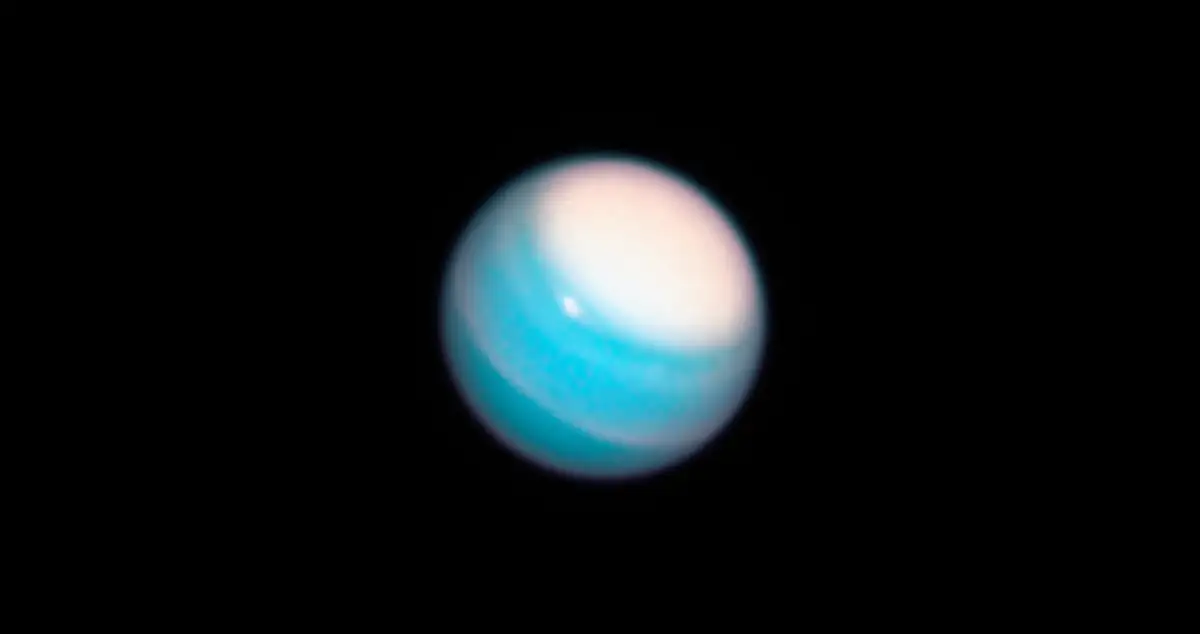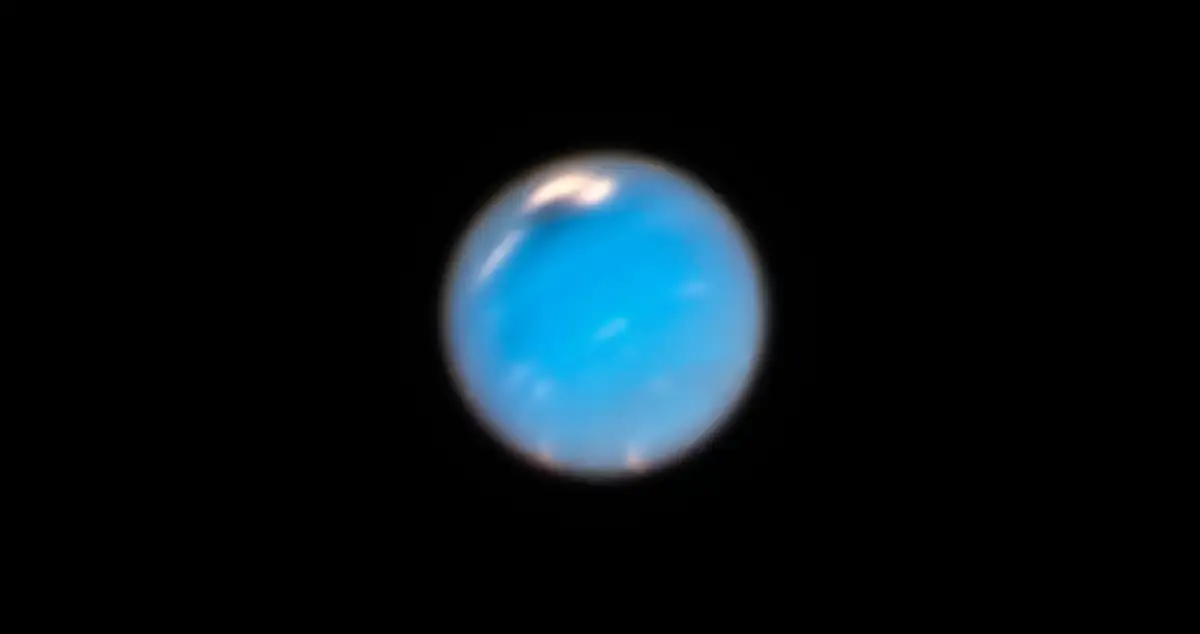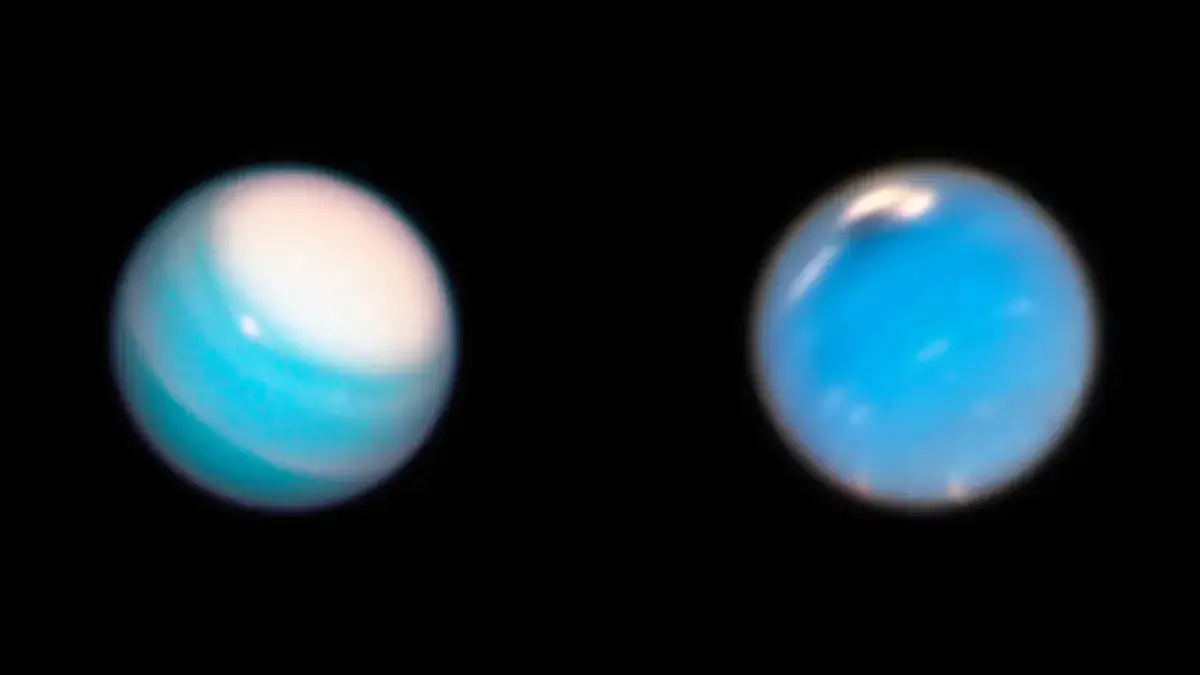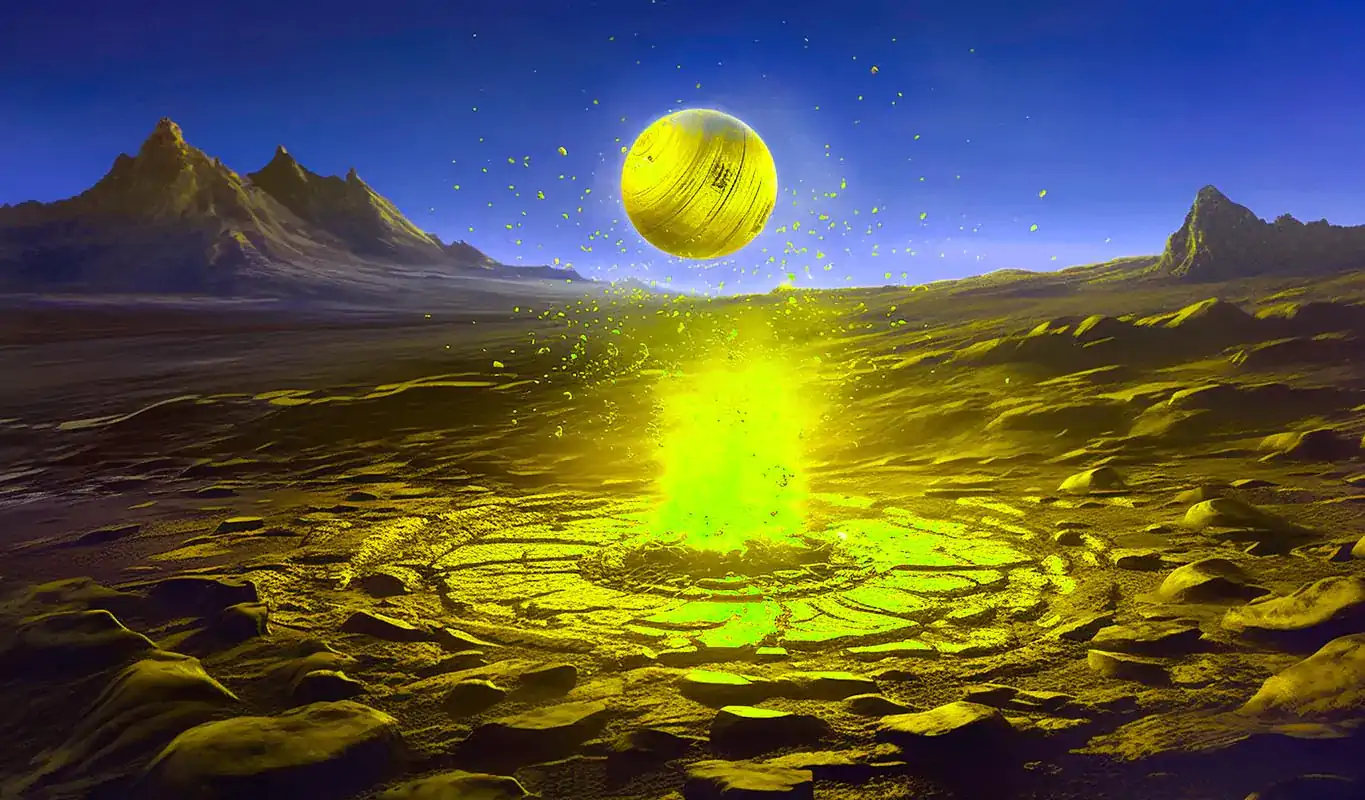NASA released new images this week showing how the 42-year-long summer on Uranus packs quite a punch, while Neptune is also being lashed with a thousand mile wide storms.
Cloud System Over Uranus’ North Pole

Thanks to the extreme tilt of Uranus—the planet spins almost completely on its side—the Sun shines nearly overhead relative to Uranus’s north pole in the summertime and doesn’t set for decades. As a result, scientists believe, the resulting atmospheric changes created a pole spanning cloud formation.
SEE ALSO: THE DISCOVERY OF URANUS AND WHY IS IT SUCH AN ODDITY
Near the edge of the cloud, NASA says, is a massive but narrow cloud of methane gas which can get bright enough that it can be photographed by amateur astronomers. The band circles the planet just north of the equator and it remains a mystery for scientists just how bands like these form on Uranus and Neptune since both planets have dominant jets of westward blowing wind that are generally very broad.
Neptune Also Showing Stormy Weather in Photos

Neptune is likewise showing signs of stormy weather. Currently experiencing summer in its southern hemisphere, a dark, stormy spot can be seen in its northern hemisphere that NASA says is about 6,800 miles across—about 2.5 times the width of the continental United States. The storm is accompanied by white “companion clouds” that form when the ambient gas ahead of the storm is forced upward and over the vortex.
The methane gas then freezes to form ice crystals in the upper atmosphere, Similar to the way clouds form as air is pushed over mountains here on Earth.
Other similar storms have been seen on Neptune before. Voyager 2 took pictures of 2 earlier dark storms on Neptune when it flew by in 1989 and Hubble has captured three earlier storms going back to 1993.
Hubble is the only telescope currently that has the blue light sensitivity to capture these storms in Neptune’s atmosphere, which appear and disappear very quickly, in astronomical terms. A study led by Andrew Hsu, an undergraduate student at the University of California at Berkeley, estimated that dark spots like these formed on Neptune roughly every 4-6 years and fade away after about 2 years.
The Big Red Spot, the gargantuan storm about twice the diameter of Earth that swirls through the atmospheric band of Jupiter 22 degrees south of its the equator, has been observed since the late 1800s. It may even have been spotted as early as the 1600s, which would make it centuries old.
Monitoring the Ice Giants
According to a NASA statement released with the new images, the planets “have no solid surface but rather mantles of hydrogen and helium surrounding a water-rich interior, itself perhaps wrapped around a rocky core. Atmospheric methane absorbs red light but allows blue-green light to be scattered back into space, giving each planet a cyan hue.”
In order to determine what weather is like on these most distant planets, NASA must take many images over an extended period of time to monitor changes in the planets' atmosphere over time, hopefully giving them a long term record to work with. As such, Hubble has been taking pictures of the planets regularly as part of a long-term monitoring mission.
 SHOW COMMENT (1)
SHOW COMMENT (1)


A new study joins the body of research showing that being bilingual, knowing more than one language, slows down the negative effects of aging on the brain.

 Inside the discovery of the largest bacteria ever found
Inside the discovery of the largest bacteria ever found
 Dinosaurs kept warm — and accidentally survived a mass-extinction event
Dinosaurs kept warm — and accidentally survived a mass-extinction eventIn a first, researchers discovered a rare mineral that comes directly from Earth's lower mantle
China claims ‘world’s first’ kerosene-powered engine could propel jets nine times the speed of sound
Ukraine's drone finds cemetery of tanks inside Russian border



 BlocksInform
BlocksInform










